Ohio National Guard practices proficiency, prepares for potential catastrophic attacks
Army North CSTA observes as Ohio CERFP demonstrates it is 'mission ready'
Sgt. Maj. Eric Lobsinger, U.S. Army North PAO
BUTLERVILLE, Ind. - During the training scenario, the unthinkable happened: A 10-kiloton blast detonated in the heartland of the United States - Indianapolis, capital of Indiana.
And leaping to action and rapidly deploying to provide their border state brothers and sisters the assistance they desperately needed were the Soldiers and Airmen from the Ohio National Guard's Chemical, Biological, Radiological, Nuclear and high-yield Explosive (CBRNE) Enhanced Response Force Package.
Such was the scene Nov. 7 at the at the Muscatatuck Urban Training Center, located near Butlerville, Ind., as members of Army North's Civil Support Training Activity watched the first responders spring to action.
"This type of training enables the Ohio CERFP the ability to groom their skills," said Phillippe Kebreau, who serves as an operations analysts and deputy with Echo Team of ARNORTH's CSTA. "These are very perishable skill sets - especially the medical piece and the search and extraction piece. A lot of training is required - and a lot of certification is required for that."
He said it is only through thorough exercises such as the Vibrant Response 10.1 Field Training Exercise that the participating Soldiers and Airmen can maintain their high level of proficiency.
The CERFP training concentrated on three specific elements: Search and Extraction, Decontamination and Medical, said 1st Sgt. Lee Smith, 637th Chemical Co., Ohio National Guard, based out of Kettering, Ohio.
The three elements were all interactive, with actions taken during one element directly leading to actions taken in another.
During the search and extraction phase, the CERFP members searched for victims and safely extracted them from rubble piles, a jail and a hospital infirmary for the jail. The victims were then transported to a decontamination site.
"We set up three decontamination lanes - one for ambulatory, one for non-ambulatory and one for overflow," explained Staff Sgt. Travis McGrath, a squad leader with the biological integrated detection system platoon of the 637th Chem. Co.
The objective at the decontamination site, said Kebreau, was for the first responders to conduct a thorough decontamination to remove radioactive particles, which would be on the exterior of their clothing. To accomplish this, the team would perform a thorough removal of clothing and conduct a wash down to get to the shaded areas of the body, especially the hairy areas of the body, where radioactive particles have the tendency to settle.
"We try to get as realistic training as we can," said McGrath, "because if we are ever set up where there is an incident - a nuclear, biological or chemical attack - we would be the ones called up as the first responders."
The ultimate objective was to reduce the amount of contamination to an acceptable level so they wouldn't create a cross contamination and further contaminate the medical care providers. Once is completed, the victims were then seen by the medics at the medical stations, which were operated by the Airmen from the Air Guard's 121st Air Wing, based out of Columbus; 178th Air Wing, Springfield; 179th Air Wing, Mansfield; and the 180th Air Wing, Toledo.
In the medical area, medical personnel performed a quick assessment of the victims' medical conditions and ensured they were sent to the proper medical facilities based on their injuries.
"One of the advantages of this training is it provides the ability to train some of our new people - we continue to add depth," said Air Force Master Sgt. Ron Conn, CERFP medical logistics, Ohio Air Guard state headquarters.
Another advantage for the participants was it provided them the opportunity to garner feedback from the subject-matter experts.
"Army North observes and verifies that we set up all of the lanes properly, in a timely matter, and make sure that we have everything verified," said Smith. "Afterward, they do an (after-action review) with us, where we get feedback on what we can do better next time so that way we are constantly improving."
And ultimately, improving is of vital importance because of the stakes involved if an attack such as this were to occur. It is important not only for the states of Ohio and Indiana, but the nation as a whole.
"It is important because we are there to save the lives of American citizens when we are called upon," said Smith. "We are prepared with ready units and ready Soldiers at all times - at any place and any time the American people need us."
-30-
Extract.
BUTLERVILLE, Ind. - Soldiers from the Ohio National Guard's Chemical, Biological, Radiological, Nuclear and high-yield Explosive Enhanced Response Force Package search for trapped victims in a pile of rubble Nov. 7 at the Muscatatuck Urban Training Center. As members of U.S. Army North's Civil Support Training Activity observe, the Soldiers worked with their fellow members while conducting decontamination lane training during the Vibrant Response 10.1 Field Training Exercise.
(U.S. Army photo by Sgt. Joshua Ford, U.S. Army North PAO)
Suit up.
BUTLERVILLE, Ind. - Soldiers from the Ohio National Guard's 637th Chemical Company, which is based out of Kettering, Ohio, don their protective gear Nov. 7 at the Muscatatuck Urban Training Center. The Soldiers worked with their fellow Ohio Chemical, Biological, Radiological, Nuclear and high-yield Explosive Enhanced Response Force Package members to run through decontamination lane training during the Vibrant Response 10.1 Field Training Exercise.
(U.S. Army photo by Sgt. Maj. Eric Lobsinger, U.S. Army North PAO)
Triage.
BUTLERVILLE, Ind. - Soldiers from the Ohio National Guard's Chemical, Biological, Radiological, Nuclear and high-yield Explosive Enhanced Response Force Package perform a medical triage on a simulated injured citizen Nov. 7 at the Muscatatuck Urban Training Center during the Vibrant Response 10.1 Field Training Exercise.
(U.S. Army photo by Sgt. Joshua Ford, U.S. Army North PAO)
Suit up.
BUTLERVILLE, Ind. - Richard Ward (center) points out a key training point while providing feedback during a training event Nov. 7 at the Muscatatuck Urban Training Center. The Soldiers serve with the Ohio National Guard's 637th Chemical Company, which is based out of Kettering, Ohio. Along with their fellow Ohio Chemical, Biological, Radiological, Nuclear and high-yield Explosive (CBRNE) Enhanced Response Force Package members, they were preparing to provide first responder support during the Vibrant Response 10.1 Field Training Exercise. Ward serves with U.S. Army North's Civil Support Training Activity.
(U.S. Army photo by Sgt. Joshua Ford, U.S. Army North PAO)
-30-
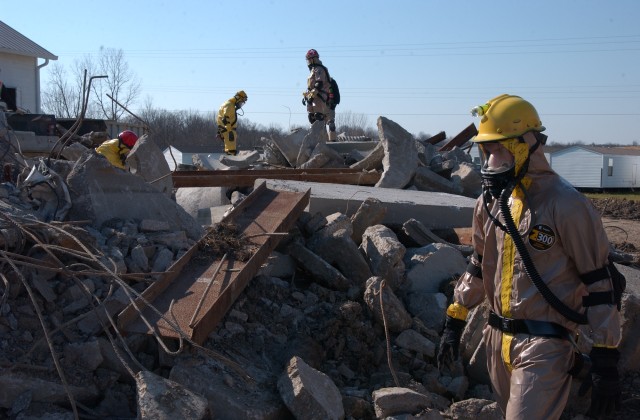
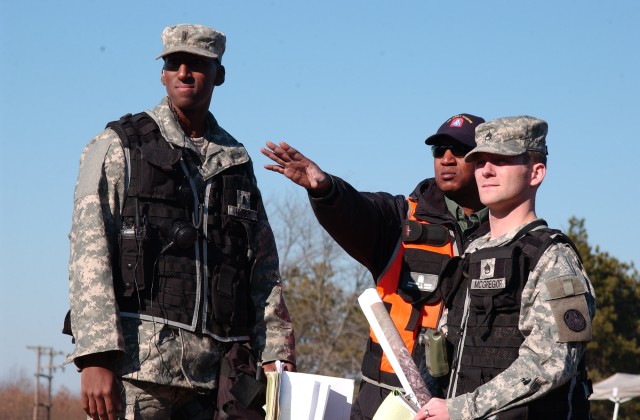
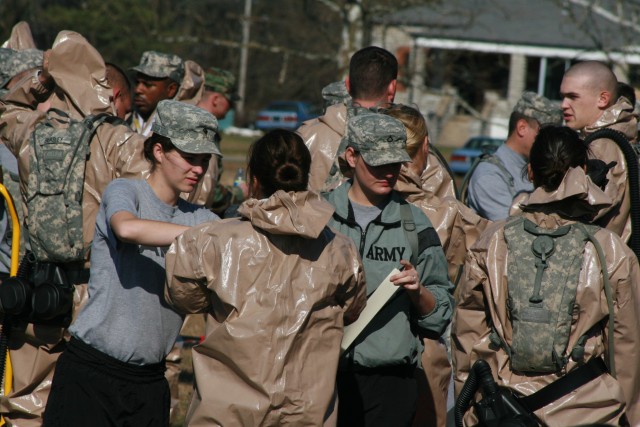
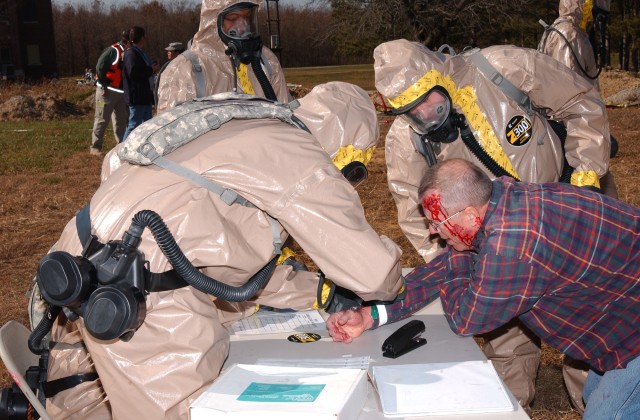
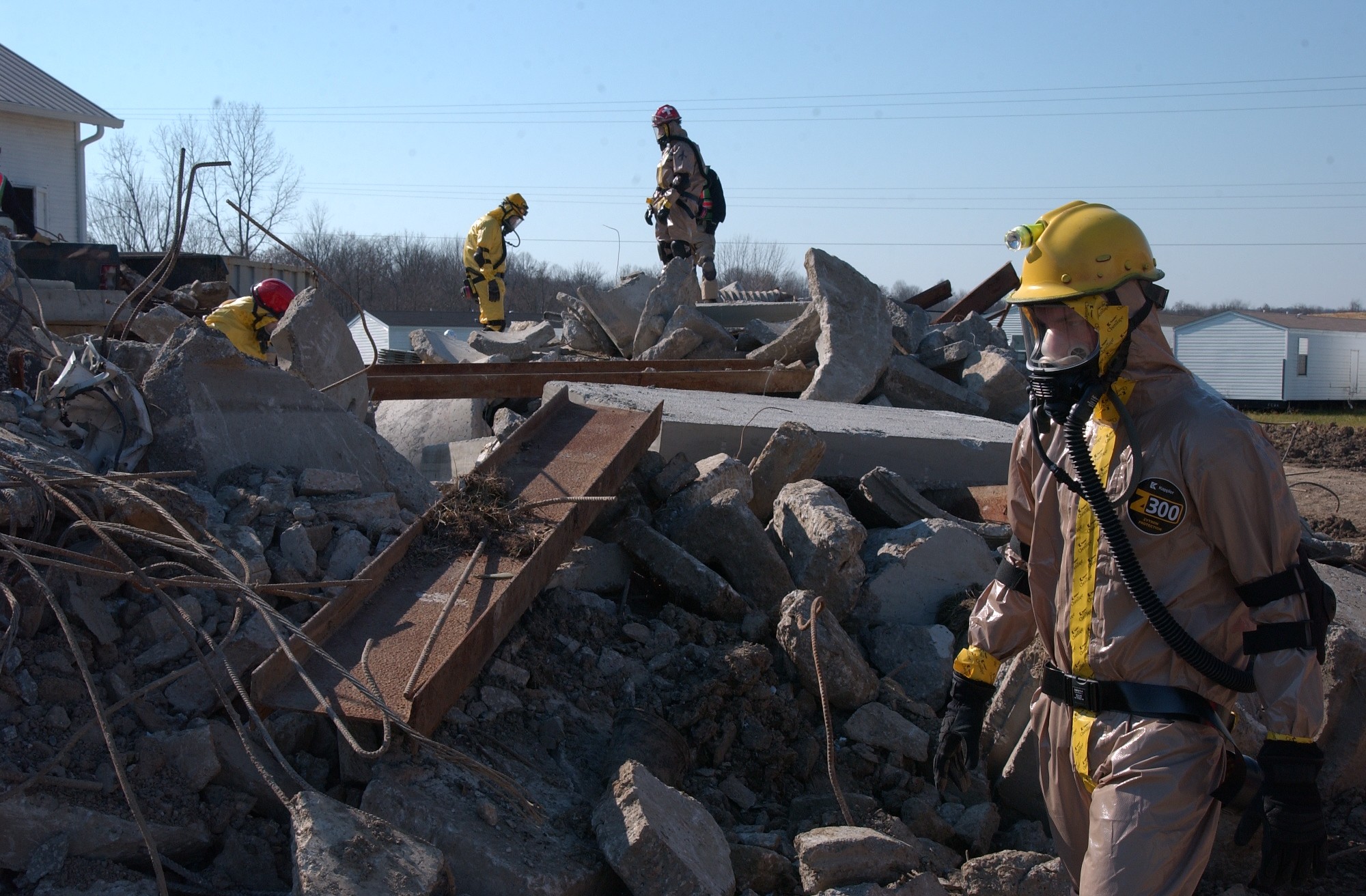
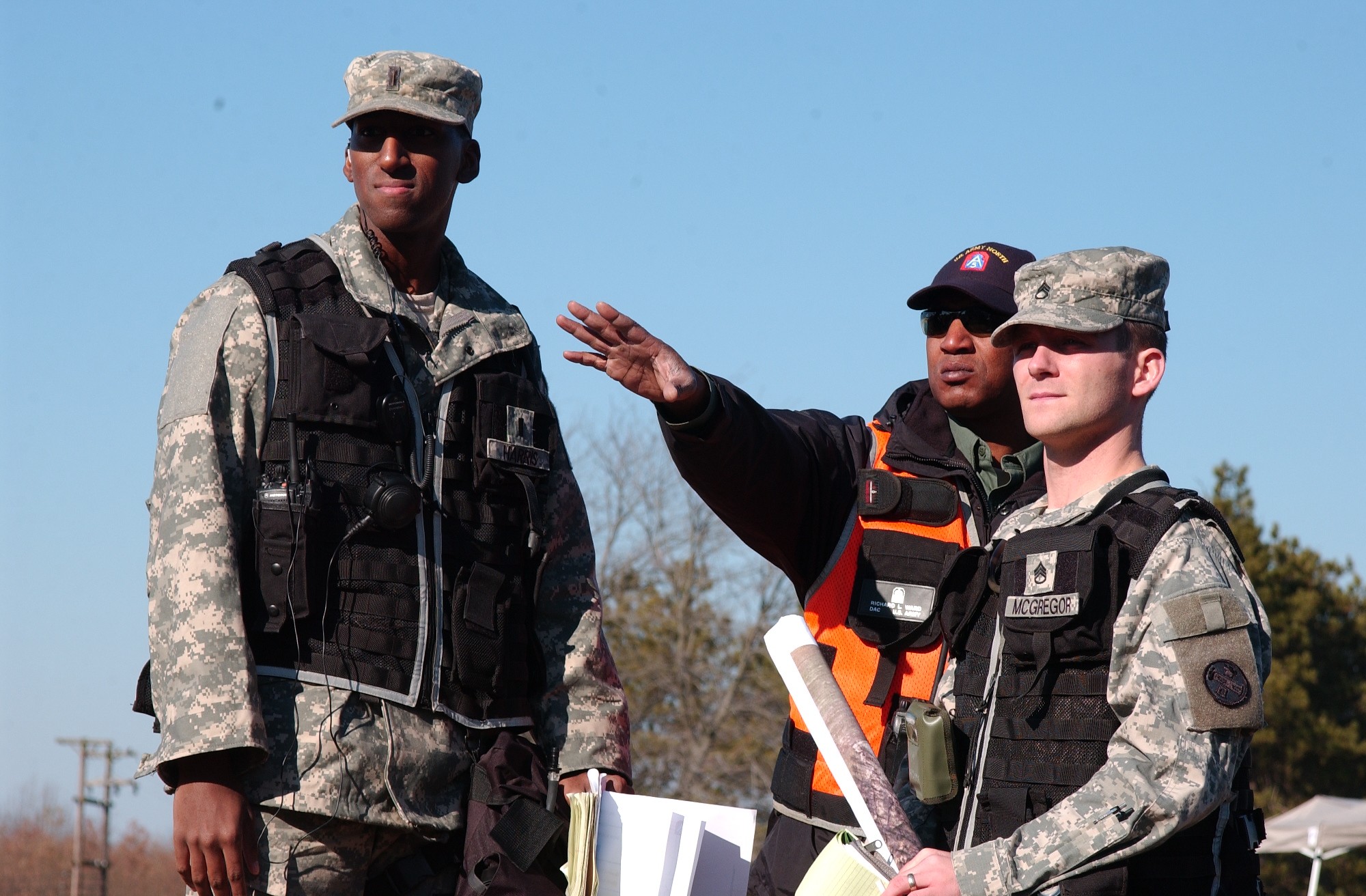
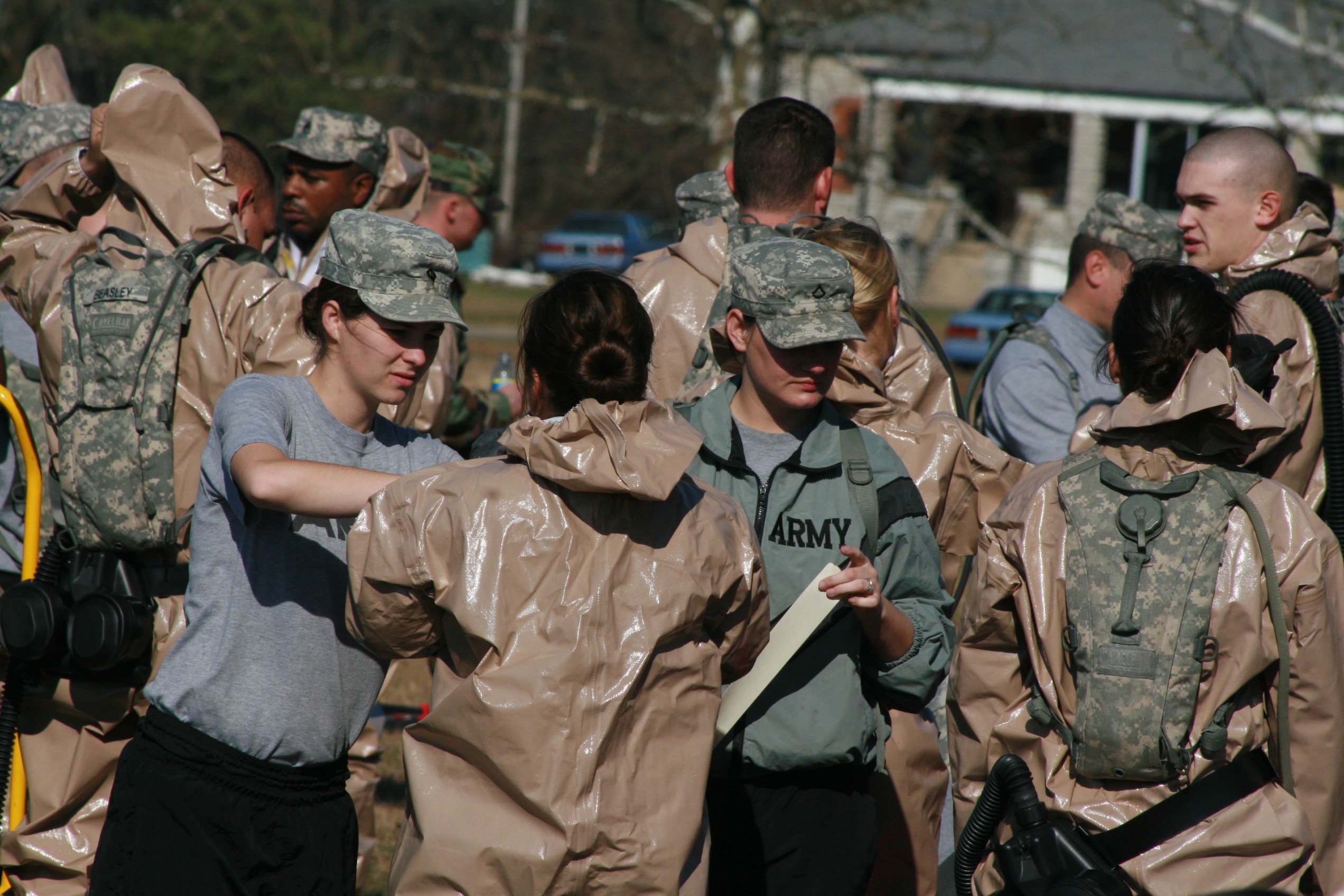
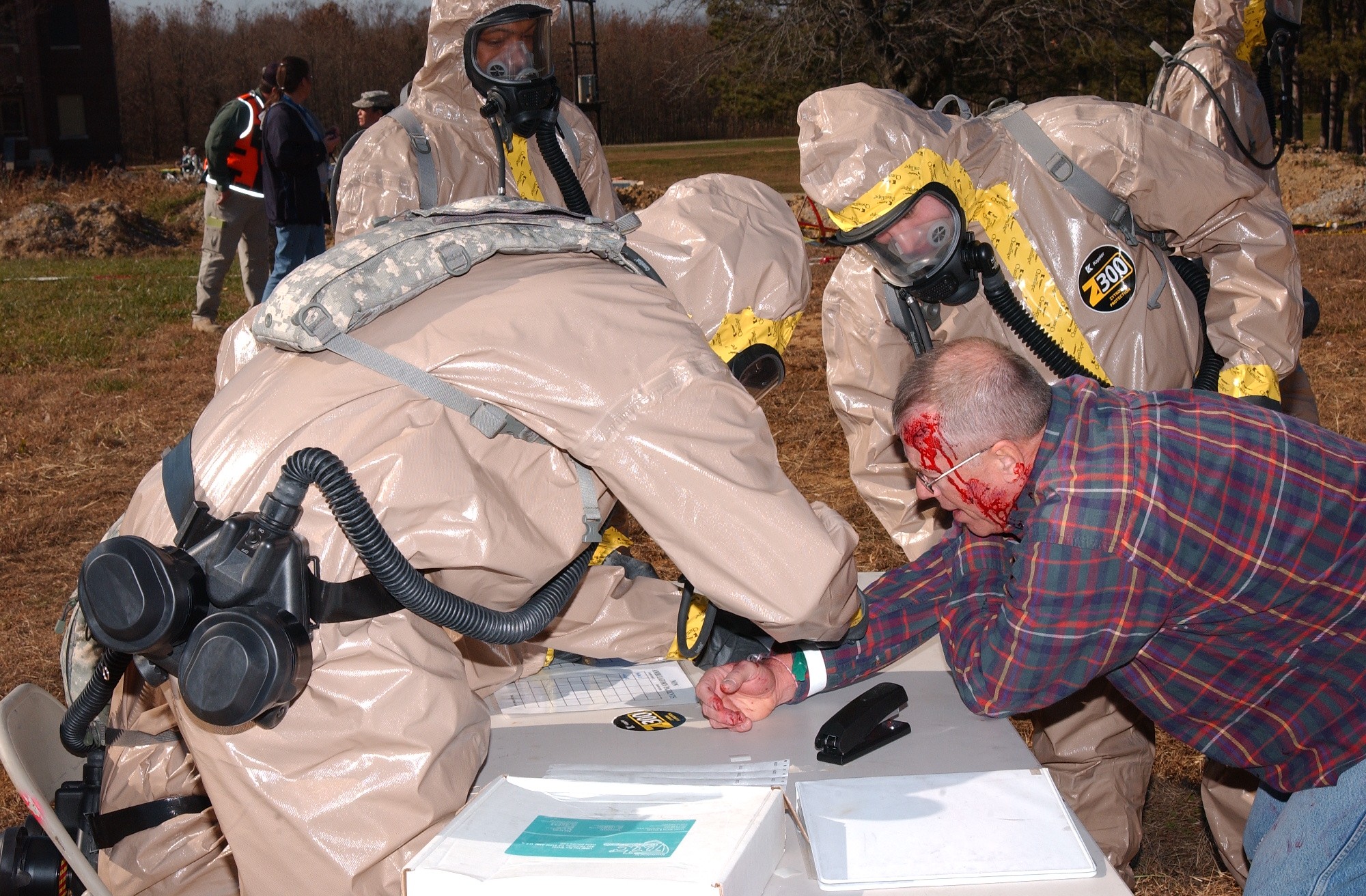
Social Sharing